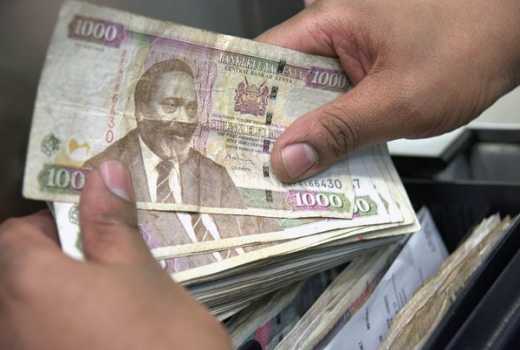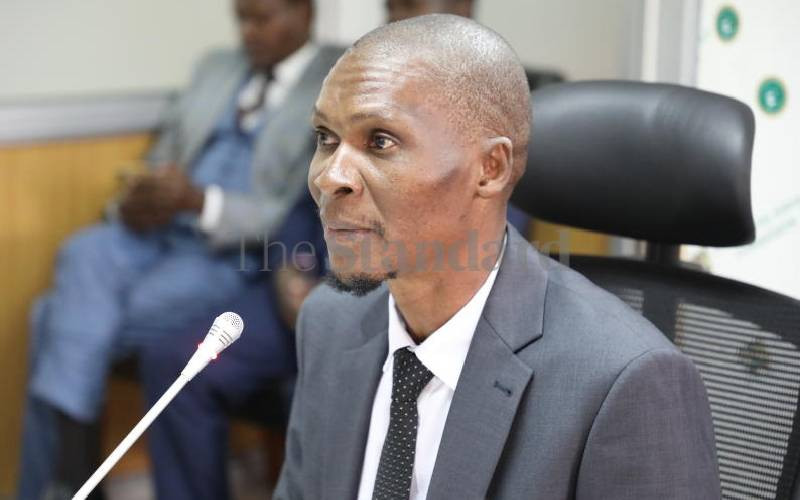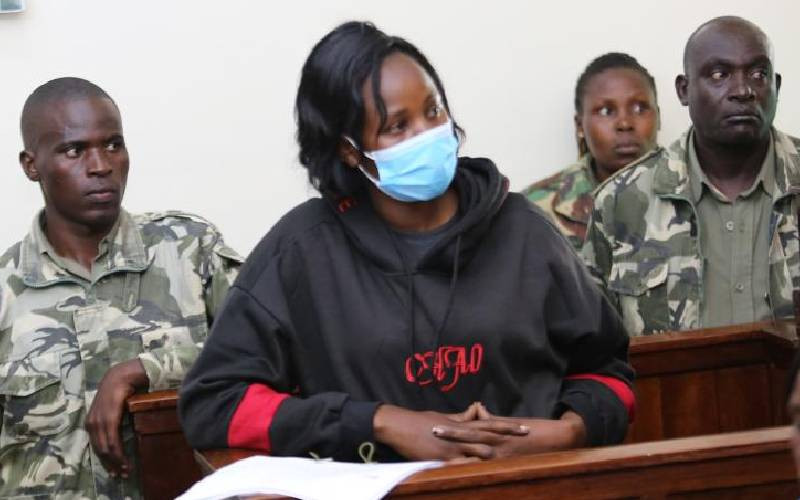
Bankers and financial investors fought against it and wished for its stillbirth, but President Uhuru Kenyatta with one stroke of the pen ensured that the rate cap regime was born.
But 18 months later, its death is imminent.
As the last push to remove the rate cap becomes a reality, key players in the industry - who have been acting in the shadows have become emboldened - revealing the intricacies that have been at play since President Kenyatta signed the bill into law in August 2016.
Central Bank of Kenya (CBK), the National Treasury, the World Bank, the International Monetary Fund (IMF) and the Kenya Bankers Association did not want the ceiling on interest rates from the onset and have maintained their opposition to it to date.
President Kenyatta with time also hinted that he had noticed the “unintended consequences” of the law and promised to find a way to “reopen the taps of credit into the economy.” His change of mind left interest rate cap cheerleaders orphaned.
And the re-entry of IMF into the debate now appears to have sealed the fate of the rate cap removal. According to CBK Governor Dr Patrick Njoroge, the cap could be removed without following the path of Parliament.
“I don’t think if it is a foregone conclusion that the only way to remove it is by repealing it in a particular way. There are many ways of removing it without necessarily going forward with a law that repeals it,” said Dr Njoroge last week.
The governor said that CBK does not want to appear like a fifth wheel in the discussion on removal of rate cap yet it is indeed the driver.
The governor’s bullish feeling is also supported by a new development at the court corridors where the rate cap debate could be settled in the absence of parliament.
The court battle could be won on a technicality that Senate ought to have discussed the bill before it was made into law.
Apparently, the little known Boniface Oduor had gone to court and sued CBK and cited Kenya Bankers Association (KBA) as an interested party, arguing that the Banking Act 2016 should be annulled as unconstitutional because it was not discussed in the Senate.
According to Cofek, Mr Njomo seemingly made a typo in the memorandum of the bill where he said the bill ‘does’ concern county governments instead of ‘does not’.
Cofek, who later joined the case, argued that this was an abuse of the court process as the clause was in the memorandum of the bill which just explains what the bill is about and not even as part of the law.
Court order
Stay informed. Subscribe to our newsletter
“The High Court decided that it could not hear the case and set up a three-judge bench which included us as interested parties,” Mutoro said.
He reckons that banks have not done much to assure the public that interest rates will not go up in the absence of the rate cap. “We are aware of the machinations to remove the rate cap and banks are exerting a lot of pressure yet they are still making billions of shillings,” Mr Mutoro said.
The regulator’s much-awaited study on the effect of the cap was also released last week, with the bank of last resort indicating that the cap had undermined its independence and failed to increase access to credit as was envisioned.
“Implementation of the law was expected to lower the cost of credit and increase access, however, emerging evidence points to adverse effects of the law on the Kenyan economy,” said CBK in the study.
The apex bank said this just a day after it lowered the base lending rate - the Central Bank Rate (CBR) - to 9.5 per cent, effectively lowering the price of loans by 0.5 per cent.
Banks can only add four per cent to CBR, meaning they can only charge up to 13.5 per cent. Already, Equity Bank, Co-operative Bank and KCB have publicly said they have complied with the change.
While the thought of cheap credit was supposed to excite the market, the reaction from the banks left the economy hungry for money. The taps of credit to the economy have been near-dry as banks protested the move.
“The only thing that can make us not to achieve Vision 2030 is the slowed private sector credit growth. If we retain rate caps for the next two years, the economy will not grow above two per cent,” Equity Bank Chief Executive Dr James Mwangi said last week.
Despite the credit crunch in the economy, banks continued to make money, only recording moderate drop in profit. KCB, the largest bank by asset and profit, recorded flat growth in profits. At the same time, Equity, the second most profitable lender, managed 14 per cent growth despite the cap.
Small enterprises
And the impact of the credit crunch has been huge. Without credit, it has meant that many businesses tamper or scale down their expansion. For potential investors and small enterprises, it has been adverse.
By the third quarter of last year, the wheels of the economy moved the slowest in five years, expanding the growth by 4.4 per cent compared to 5.6 per cent achieved in a similar quarter in 2016.
This was blamed on extended drought, political uncertainty and the interest rate cap.
In the ensuing melee, banks directed their lending to the government, locking out the private sectors as they deemed it too risky to trust with their money. All major banks - Equity Group, KCB Group, Co-op Bank, Standard Chartered, Barclays Bank and Stanbic Holdings - recorded the fastest growth in lending to the government as the credit to private sector lagged behind.
While in December 2015, the share of banks holding of government securities stood at 45.1 per cent, at the inception of the rate cap law, the share increased to 50.5 per cent.
“Government securities are not only safe assets for banks, but they are also considered as liquid instruments in the computation of the liquidity ratio,” CBK noted in its draft study.
This safe haven meant that while the private sector was starved of credit, banks could easily access additional liquidity from these securities and use it as collateral in the event of potential risks.
In the fight over access to credit, the government won the hearts of banks, elbowing out the private sector. Currently, the government is borrowing a five-year loan at 12.2 per cent while the private sector is supposed to borrow at 13.5 per cent.
Private sector credit growth has been on record lows, with some sector registering negative growth. In the 12 months to February 2018, it grew by 2.1 per cent, being slightly lower than the 2.4 per cent in December last year. But this could largely be credited to drought and political uncertainty that slowed down growth in the sector.
According to NIC Bank boss John Gachora, interest rate cap has not been the only problem. The demand for loans has also been dampened.
“Quality credit application has gone down. We talked to our clients and they did not want to stock up because of the electioneering period,” he said.
Mr Gachora said the best indicator was the shopping basket where NIC Bank saw average till numbers drop by 50 per cent “which shows that household consumption drop, with the net effect being seen on Deacons and Nakumatt.”
And with banks having started adjusting their operations to the rate cap regime and investors on the stock market having priced in the capped prices of loans, IMF came knocking.
Last week, Dr Njoroge confirmed that both IMF Stand-By Arrangement (SBA) and Standby Credit Facility (SCF), which the country enjoyed for 24 months, ended on March 13.
The country needs such facilities to shield itself from exogenous shocks. When IMF officials arrived in the country for a review, the government committed to, among other things, remove the caps and also implement fiscal consolidation measures to cut reliance on debt.
Governor Njoroge said the country had requested for extension of both facilities but the latter could not be extended.
“SBA has been extended and access is available to us as before but conditional to our completing of the IMF review. The expectation is that we will compete for the review sometime in June or thereabouts,” said Dr Njoroge.
This could mean among other conditions was having the rate cap removed.
The expectations have thrown the Nairobi Stock Exchange (NSE) into excitement as banks stocks drew the attention of many investors. KCB and Equity stocks have even touched 12-month highs.
Kiambu MP Jude Njomo, the architect of the bill that led to the rate cap, left the CBK with the power to determine the base rate, where banks would add four percentage points to CBR.
“The maximum interest rate chargeable for a credit facility in Kenya be at no more than four per cent, the base rate set and published by the CBK,” says section 33B of the law.
Loan pricing
In September 2016, CBK decided that the base rate was CBR. This is despite the fact that CBK had a loan pricing mechanism for banks known as Kenya Bankers Reference Rate. This rate was rendered ineffective.
But now, CBK says in its study that linking CBR to the price of loans has crippled its work and thinks rate capping is unlawful. “Article 231 of the Constitution stipulates that the bank shall not be under the direction, or control of any person or authority in the exercise of its powers, or in the performance of its functions,” CBK says.
And having said last week that repealing the law may not necessarily need taking the Parliamentary route, bodies such as Consumer Federation of Kenya (Cofek) are watching closely.
Cofek Secretary General Stephen Mutoro said he had reached out to various Parliamentary committee chairs even though “we know the President has made a commitment to remove it.”
“From his (Dr Njoroge) statements, we see he might want to coerce the judiciary, but that will be difficult. We are watching out for any mischievous clause being introduced in Parliament through miscellaneous amendments or the Finance Bill 2018,” Mutoro said.
NIC boss, Mr Gachora, agreed with him, saying that banksneeded at least a year to get customers’ goodwill before the rate cap can either be modified or repealed.
Good earnings
“If you look at the results we are releasing, I think one, banks realise they can still make money even without charging so much interest on borrowers and two, we can report moderate growth in profits instead of chasing those 10 per cent growth we were used to,” Mr Gachora said.
KCB Group Chief Finance Officer Lawrence Kimathi conceded that banks had been insensitive and that the regulator has to come up with a way to limit the excesses of lenders if the rate cap is removed. “We have got to find a way that if the rate caps are reviewed, we do not go back to what we were,” he said.
Mr Kimathi expressed confidence that the regulator would have the mechanism to ensure that banks do not get back to “those bad habits”.
Barclays Bank of Kenya Chief Executive Jeremy Awori said he hoped that even in the absence of the cap, bankswould not use tools such as Credit Reference Bureau to blackmail customers but as a tool to price each borrower as per their credit profile.
“I think over time, that’s inevitably going to happen. For competitiveness, one really needs to reward and recognise people who are a lower credit risk and give them better pricing,” Mr Awori told Financial Standard.
Equity boss, Mr Mwangi for his part is optimistic that the rate cap regime removal will be a bonus.
“There will be a very big bonus to the economy when rate caps are removed because banks will unleash their latent power of lending,” he said. Whichever way it goes, the debate around the price of loans remains on the lips of many stakeholders.
[email protected] and [email protected]
 The Standard Group Plc is a
multi-media organization with investments in media platforms spanning newspaper
print operations, television, radio broadcasting, digital and online services. The
Standard Group is recognized as a leading multi-media house in Kenya with a key
influence in matters of national and international interest.
The Standard Group Plc is a
multi-media organization with investments in media platforms spanning newspaper
print operations, television, radio broadcasting, digital and online services. The
Standard Group is recognized as a leading multi-media house in Kenya with a key
influence in matters of national and international interest.
 The Standard Group Plc is a
multi-media organization with investments in media platforms spanning newspaper
print operations, television, radio broadcasting, digital and online services. The
Standard Group is recognized as a leading multi-media house in Kenya with a key
influence in matters of national and international interest.
The Standard Group Plc is a
multi-media organization with investments in media platforms spanning newspaper
print operations, television, radio broadcasting, digital and online services. The
Standard Group is recognized as a leading multi-media house in Kenya with a key
influence in matters of national and international interest.









